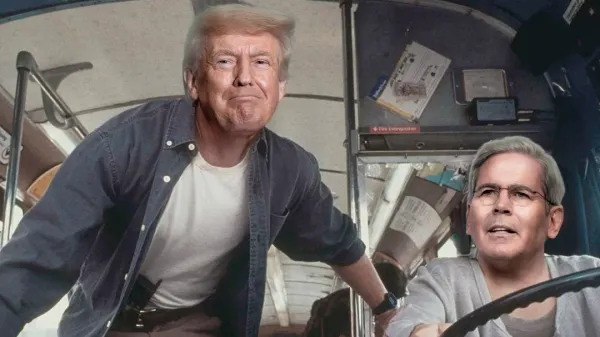Changing Our Approach
A Macro Manifesto to Prepare for Crypto’s 2024

I’ve decided it’s time to write about crypto more.
An epiphany. Similar in scope to making coffee at home instead of going to the local coffeehouse.
Not only do I save nearly $5 each day (I drink two or three cups of coffee a day, and this is nearly two decades ago – inflation, am I right?), but the coffee can be better tailored to my preference.
So I bought a Mr. Coffee drip machine in college. First thing I did was start drinking it black. No need to worry about having sugar, milk, or creme stolen by a roommate. This led to me dropping the nostalgic Chock Full o'Nuts and ubiquitous Folgers. It was not about masking taste, but finding taste.
Then, once I got a job, I graduated to an espresso machine. And even some burr type of grinder people on the internet told me I simply could not live without (news flash: you can).
Despite the snobbish view on coffee I’ve since acquired, it didn’t take long to break even on this bougie assembly line of liquid caffeine delivery apparatuses… An assembly line that at one time included an espresso machine I repaired half a dozen times over its nine years of existence (don’t get me started on appliances versus machines).
Now, I bring up this rather boring personal story of my still-novice view of coffee for a reason. It’s time to embrace crypto instead of just masking it behind the macro. After all, nearly 100% of our readers are from crypto.
So if you are all here for crypto, maybe we bring out the taste, flavors, and various blends of it. And let’s not be afraid to get bold, roast, and… OK, I’ll stop. Getting a bit carried away on the analogy.
I’ll get to the point here. The epiphany here is our team will begin a subtle shift to what can best be described as sell-side research that you can understand. Delivering more crypto content to crypto readers… I know, borderline genius.
Much of this will lean into a more formulaic approach to analyzing each token. Our mission here is to figure out how to raise the standard in the industry. This is one of several ways we think we can accomplish it.
More on this in the next week or two.
In the meantime, I thought I’d simply drop a group of essays with brief summaries that form my macro outlook over the next few years. This way, I can feel OK writing more about crypto and ignore the compulsory urge to write about macro. After all, our writer TD does a great job covering the macro side of things.
Alright, I hope you enjoy this brief manifesto of macro.
Step One: Banks Take a Cue From Tether
Tokenization is the buzz on Wall Street. It’s as if every traditional institution discovered what Tether is doing… They take in dollars, issue a token on the public blockchain that’s redeemable for dollars, buy Treasuries with the dollars you deposited, and hold the yield from those Treasuries for themselves.
The result: over $2 billion in revenue for the first two quarters of 2023 on approximately $80 billion of assets. It’s essentially a 5% annual yield on managing a payment infrastructure.
Now, for anybody who was listening in on last week’s Digital Dollar hearing in Washington, you know that banks are taking note. But they have a bit of an issue.
If a customer places a dollar in the bank’s vault, and the bank issues a tokenized form of that debt, the bank can’t lend out that dollar to somebody else. That’s because their customer still technically holds the asset by owning the token.
The banking lobbyist is scared that this would create tighter credit conditions… especially as regulations are about to shift to require banks to hold more capital (Basel III endgame).
But their worries are a symptom of their nearsightedness.
Banks typically only make about 1% on their assets, and that accounts for about 65% of their revenue.
Right away, we can see Tether’s model is much more productive.
It doesn’t end there. If a bank took advantage of this opportunity, it could build services that attracted those dollars to various offerings on their platform. Think things like borrowing, yield, and more. Then, it can charge for the usage…
Meaning it can now double-dip on the productivity of each dollar in its custody. All while boosting its capital requirements to satisfy the new rules coming from regulators.
Which is to say, what are the banks crying about? Conditions are set for them to earn money multiple times over from each dollar.
So their worry is just a lack of understanding. But not all banks are so naïve.
We already see JPMorgan’s JPM Coin in the wild, boasting one of the largest pools of blockchain developers. The big banks know they all are tech companies now, even if most others don’t see it yet.
But how to make this standard practice?
That was a topic I dove into in this essay, where I touched on HOW a dollar backed by Treasuries is coming. We just need an excuse, like a liquidity crisis in the Treasury market… which I touched on in this essay recapping all the recent Jackson Hole Symposium academic papers.
We saw the Bank Term Funding Program (BTFP) program get initiated after Silicon Valley Bank’s (SVB) solvency issue. If tokenized debt dollars get implemented, there will be no need for banks to run into solvency issues like we saw with SVB. And no need to renew BTFP in March 2024.
So first step, formalize Treasuries as the backing of dollars… similar to how Tether and Circle’s USDC works. It’s a move that will help kick the can further down the road on inflation and boost demand for Treasuries.
Such a move will create a net demand for dollars in time. It’ll likely be reminiscent of the U.S. Dollar Index’s (DXY) initial softness in 2020, followed by it regaining strength as the yield on U.S. dollars became very healthy.
Which brings us to what will be the next technological development for money, one that will mark a permanent top for DXY…
Step Two: The Dollar Becomes Just Another Altcoin
For the last several decades, the vast majority (today, around 88%) of foreign trade settlement has involved the U.S. dollar.
But this run is nearing an end.
Thanks to banks and global institutions such as the Bank for International Settlements, solutions are coming that will get rid of the need for the dollar.
For anybody in crypto, we’ve seen what settlement technology can do to something that’s regarded as an essential asset for trade.
When one of the first decentralized exchanges rolled out, Bitcoin’s (BTC) dominance in the market took a major hit. No longer did users need BTC on hand for each transaction. Ether (ETH) could be used instead.
This same type of technology is being vetted by the biggest banks in the world. And once CBDCs and the debt dollar get rolled out in tokenized form, this technology is the next natural progression for global trade.
The timing is set to begin in late 2025. At first, it’ll be a lot of signaling and preparation for the rollout… A rollout that will be very limited in scale in the years that follow.
Anyways, if you want to dive further into this thought, check out this 22-post Twitter thread. Seems I never wrote an essay on the idea like I thought. However, I did expand on it in a ten-minute segment on the Alpha Bites podcast that you can access here starting at the 24:30 mark.
So to sum it up so far, we have an upcoming crisis that helps establish the tokenized debt dollar. This helps DXY march higher (initially, I expect momentary softness like we saw in 2020 before the Federal Reserve raised rates).
Once DXY dominates for some time, its reign will start to wither over many years as settlement technology evolves. Which means less transactions settled using U.S. dollars.
Which means the question on your mind should be, where does crypto sit in all of this?
The Narratives Are Aligning
In 2020, the narrative was that Bitcoin was an inflation hedge. While Bitcoin suffered once inflation did show up, what really boosted it at the time were people’s expectations of inflation.
Or said differently, crypto went up because everyone was dreading the effects of the poor policies that the Fed employed with the dollar.
Tokenized debt dollars, while not on the blockchain initially, will hint at a second round of this mismanagement.
And if we pair up the timing of BTFP’s expiration next March with Bitcoin’s halving next April, and the upcoming BlackRock ETF decision by the SEC… We can’t help but see the writing on the wall. Bitcoin will be a great narrative at the right time.
Money allocators, instead of writing a 22-tweet thread on Bitcoin as sound money, will package it up in institutional reports with high-gloss cover pages. The influencers adorned with Jos. A. Bank suits will preach how every portfolio is better optimized with an allocation to Bitcoin given the uncertainty of monetary policy, inflation, World War III, and other narratives that fit the bill at the time.
Whatever the excuse, the end result is the same. The next halving bull cycle will be massive. It’ll remind us of what gold did from 2004–2009 once investment professionals financialized gold via ETFs. Number will go up.
And as the tide rises… so will all the other boats.
When it comes to macro, this is the lens I view things through. Even when it comes to crypto, this rise of Bitcoin will legitimize all that is being built. Ethereum will then follow suit, along with others.
But that’s not the permissionless, Web3 crypto that many of us are here for.
For that world, we need to look at the other side of the coin to better understand where they meet. A view that is best saved for another day.
Your Pulse on the Dollar,
Ben Lilly





